Mark Sisson's Blog, page 301
May 2, 2014
From Primal Passion to Primal Business: Turning What You Love Into What You Do
It’s Friday, everyone! And that means another Primal Blueprint Real Life Story from a Mark’s Daily Apple reader. Today’s post is from my good friend Bob Montgomery. He is the Chef & Owner of the Not So Fast! Food Truck in San Diego, California and new Primal Blogger – NotSoFastFood.com. Bob has catered numerous PrimalCon events in Oxnard and Lake Tahoe and plans to return this year! Bob presented at the Real Food Con hosted by Underground Wellness in Fall of 2013 and attracted 70,000 visitors online over the course of three days. Bob also just got back from Austin, TX, where his cooking demonstration at Paleo FX extolled the ”Benefits of Cooking with Animal Organs,” particularly Beef Heart.
If you have your own success story and would like to share it with me and the Mark’s Daily Apple community please contact me here. I’ll continue to publish these each Friday as long as they keep coming in. Thank you for reading!
 In, 2006, I was a “normal” 22 year old kid working at the House of Blues in Atlantic City, NJ. I hung out with friends and family, partied, and ate and drank whatever I wanted. I honestly thought I was happy. My 268 lb reflection in the mirror didn’t agree.
In, 2006, I was a “normal” 22 year old kid working at the House of Blues in Atlantic City, NJ. I hung out with friends and family, partied, and ate and drank whatever I wanted. I honestly thought I was happy. My 268 lb reflection in the mirror didn’t agree.
Depressed and lethargic, I realized I finally had enough. I reached out to my cousin for advice. He suggested the Low Carb/Atkins Diet approach to losing weight. I adopted the diet rather quickly and within three months of dieting and relatively no exercise I dropped 30 lbs. I looked better, breathed easier and I dropped clothes sizes dramatically. Despite my new appearance something remained absent. I looked better but wasn’t healthier. My underlying health issues still plagued my days. I suffered from extreme bloating, acid reflux, dermatitis, and hematochezia (a condition that causes lower gastrointestinal bleeding). I didn’t know what I was doing wrong, because, I thought I was eating “healthy” foods. Over the next few years, I bounced back and forth between low-carb dieting and traditional eating.
In 2010 I sought medical attention for a severe internal issue. Although I was following a moderate low carb diet and in the gym nearly every day, I felt horrible. After multiple doctors evaluated me multiple times, consensus suggested I undergo major surgery to relieve me of the indescribable pains I had almost every day. I became terrified by the thought of major surgery. Logic determined that since medication, seemed to help the problem, surgery may cure it. Right?
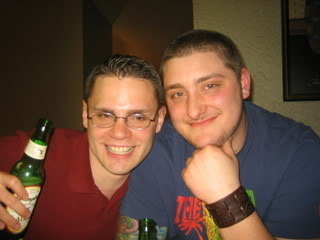
Shortly after moving to San Diego in 2011, my symptoms mounted and many days found me immobile on my couch. Enough was enough! I started online research and read articles on Leaky Gut, Krohn’s Disease, Autoimmune Diseases and more. After clicking link after link, I stumbled here…Mark’s Daily Apple! I started reading every article from the beginning of time. I learned how soaking and fermenting Soy & Legumes releases phytic acid, saponins, and lectins. I found out about Vibram Five Fingers and they’ve changed my hikes, heavy lifting, and the way I walk every day. I found my very FIRST Primal Recipe, “Better Than Take Out Beef & Broccoli.” I felt more informed and excited every day as I read more and more posts. I couldn’t get enough. I wanted to experience everything I was reading and feel the amazing changes everyone already described after making the big leap! Finally, I read The Primal Blueprint and it changed my life.
Health, Fitness, and Happiness were all in within my grasp and Mark made it seem so simple. Man, was he right! I started cooking at home with delicious, local and organic produce, sustainable and pastured meats & eggs, wild caught seafood and healthy fats and oils. More of my day happened outside as I tried lifting heavier things while soaking up some Vitamin D. Tossing and turning at night disappeared completely, and when I woke up, I felt rested and eager to start my day. All within just three weeks, all of these amazing changes were happening in my life, but that wasn’t it!! All of the issues that had been plaguing me off and on for years were going away! My dermatitis cleared up almost IMMEDIATELY. I wasn’t bloated after every meal. Heartburn and chronic burping were gone! Best of all, the hematochezia, source of my medical fears and looming need for surgery, subsided. My pain was gone, and the inflammation decreased significantly! Everything that The Primal Blueprint made me believe I could change was actually happening! I was convinced if the Primal lifestyle could have such a major impact on my life in such a short amount of time that it could do the same for anyone.
Three months after adopting the new lifestyle, I was absolutely miserable managing a corporate steakhouse chain. I was doing a job that I hated. I had to wear slacks, a button up, polished shoes every day, and maintain strict arbitrary grooming standards. I moved to San Diego to be near the beach, live the good life, and to grow my hair long and not care. It just wasn’t me. What was I supposed to do? I needed a job to pay my bills and the insurance benefits were a HUGE reason I was there. After talking with my former business partner, we both knew that we wanted to do something more. Neither of our jobs filled a need. The Primal Blueprint had changed our lives and we wanted to help do the same for others. We were ready to turn our Primal Passion into a Primal Business.
Our newfound passion for cooking real food had us thinking that we could open a Paleo restaurant. The Paleo & Primal community was growing and although a lot of us cook at home, we all know that cooking every meal, every day gets old. Wouldn’t it be nice to go out and grab some food without having to make a million modifications? We talked with friends, our families, bankers and we realized a brick and mortar restaurant required capital we didn’t have. I knew that a couple of my friends from the House of Blues in Dallas, Texas were running a successful food truck there. After a few conversations, we were certain this whole Paleo Food Truck thing was attainable. It had a far lower overhead and startup than a stand-alone restaurant. It was also MOBILE! We could bring REAL FOOD to people who normally wouldn’t have access to it. Food Trucks were all the rage in New York, Los Angeles & Austin, but the concept had yet to EXPLODE in San Diego!
Originally, we planned on opening the truck in March of 2013. It gave us a year to save money, research food truck startups, and to design a brand and menu. But, time became no obstacle. The drive and passion that I had for this idea far surpassed any idea I had ever believed in before. Nothing mattered to me other than Not So Fast! That was the first thing we came up with by the way, our Name, our Brand, our Everything. It was simple, clean, and made sense…along with a little play on words ☺ I woke up and my first thought was Not So Fast! I went to sleep and new menu ideas appeared in my closed eyes. I was completely infatuated with Not So Fast!. I was on the cusp of starting one of the first Paleo & Primal Food Trucks in the World. Soon enough, I would be able to travel all over this beautiful state, serving my food to people who cared about what they ate, and where it came from. I had one goal in mind when I started this whole Not So Fast! thing – to heal the world one meal at a time. That sounds crazy, but is it? What if I could influence one person to change their lifestyle, that is ONE life that is potentially saved. Real Food heals and everyone deserves to know that.
Every minute of every day became dedicated to working on Not So Fast! I woke up and jumped on the computer. I set up our social media outlets, a website, sent emails and made connections. I read articles on food truck regulations, social media branding, trademarking logos, filing an LLC and devoured business advice. I called the Department of Environmental Health every day for two months. After countless hours in the kitchen, hundreds of cold calls and emails, and the hardest work I’ve ever done in my life, we had our GRAND OPENING on July 24th, 2012! We hit the streets working seven days and 10-14 shifts a week. On the rides in between shifts, I’d be in my email on my iPhone finalizing private events and responding to food truck inquiries. My former business partner would be placing phone orders and picking up produce from local farms. While the work never really stops, it also never stops being incredible because it’s yours. It’s a truly special feeling.
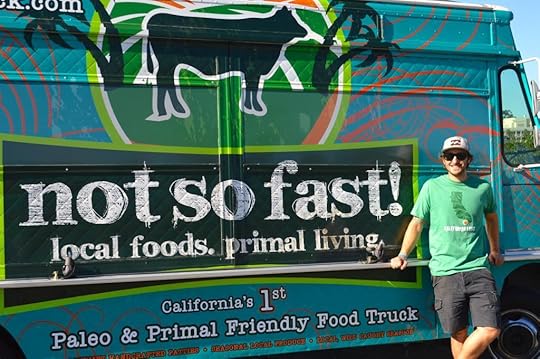
Running your own business is a daily grind, even if you are lucky enough to have a day or two off, you are ALWAYS on the clock. Downtime is a word of the past. Everything ceases to exist but your business. You’re always on the phone, updating social media, sending emails, reading, writing, cooking, cleaning, thinking of new ideas and thinking of how to grow. It is inevitable. It is the single greatest, and worst phenomenon about being a business owner. You have to give your entire life to your dream if it’s really everything you’ve ever wanted. There were points at my last job that I would be complaining during my fifth or sixth hour of a 10 hour shift. I work 18 hour shifts and although I’m exhausted, I have a smile on my face and I still get giddy with the accomplishments that are made on every shift. When you love what you’re doing and spreading the Good Food Word, it doesn’t get much better.
The last two years have flown by and it seems like just yesterday I was questioning this crazy concept we came up with. I left my job with benefits to start a food truck. A job I had never done before. I didn’t know if we’d be able to book enough gigs to keep us afloat. I didn’t know how to light the grill or fill the water tank. I didn’t know it would be so expensive to get going. Food trucks aren’t as costly as restaurants, but still require a lot of startup funds. It was crazy, but every idea is! It takes even crazier, more passionate people to put those ideas into action!
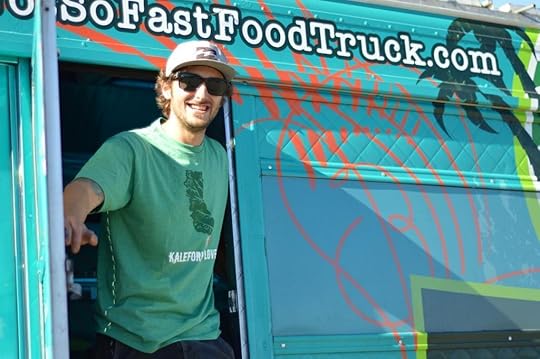
If you’ve already dedicated yourself to a Paleo or Primal Blueprint lifestyle, then I’m almost positive that you have the will power, self-confidence, and drive to do anything you put your mind and body to. Following your Primal Passion is a lot easier than you would imagine. Start by dropping everything. I’m serious. The key to taking Primal to the next level is to drop everything and, in the clichéd words of a sneaker, JUST DO IT! Thoughts and words produce no movement. If you think you have time, you don’t. Sitting back and not getting the wheels rolling is just giving someone else the opportunity to replicate the idea and taking it public before you. Do you love to cook? Start a blog. Write a cookbook. Start a food truck (Not in California. ☺ ) Are you crazy about fitness? Become a personal trainer or yoga instructor. Start a CrossFit Box. Create nature outings/natural movement retreats in your area. If you think you’re stuck, you’re not. You may have a full time job that eats up 60 hours of your week, but that means you still have 108 hours to dedicate to your PASSION.
Start putting ideas down on paper. If you come up with a great thought, don’t doubt it immediately before giving yourself the chance to really think it through. WRITE EVERYTHING DOWN! Two years later and I’m still utilizing notes and recipe ideas that were in my very first notebook.
After you have brainstormed and written your ideas down, it’s time to research your concept, your competitors, and your target market. Do whatever it takes to get your product, service, website, etc. up and running as soon as possible. If you are planning on getting into a business where there are already established brands in different states, reach out to them for advice. I must have talked to 10-15 different food trucks before we started. The information and suggestions they gave me were priceless and invaluable. Some people may not want to help, but the majority will.
In the beginning of this story, I told everyone I was a whopping 268 lbs. I was unhappy, unhealthy, and unfit. I sit here today at a respectable 180 lbs. All of my previous issues have completely vanished. I am strong, fit, and determined to be in peak physical condition. I run the absolutely awesome Not So Fast! Food Truck in San Diego, CA, the first Paleo & Primal friendly food truck in California. Not to mention, we won “Best Food Truck 2013” from the San Diego A List! I just launched my new Blog, to share my Paleo & Primal Recipes, Kitchen Hacks, Book, & Product Reviews, and Life in general. I am in the process of writing and self publishing my own E-Book.
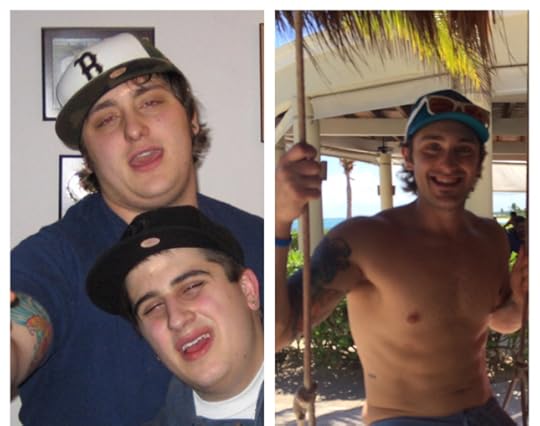
I wasn’t truly happy until I connected every aspect of my life to my passion. Although starting your own business requires a lot of work and there are many obstacles to overcome, a sincere goal to make a difference, and genuine passion will provide enough drive and commitment to overcome anything. I am truly living my Primal Passion.
Bob
Join Mark Sisson and Friends at the Mohonk Mountain House this June 5-8! Get Your Tickets for PrimalCon New York Today and Finally Meet Your Tribe!




May 1, 2014
Does the Placebo Effect Apply to Exercise?
 A couple weeks ago I highlighted a nutrition study that suggested even the body’s hormonal responses (not just self-reported “feelings”) could be impacted by how we perceive a particular food we eat. It’s the kind of thing that I feel like opens up life and health in an amazing way. Let me be clear that I’m not claiming people can abuse their bodies and then erase it all with the magic of positive thinking. I think most people understand it’s positive thought in tandem with positive action that makes for significant, long term benefit. To a point, I’ve always felt there was something to the psychological overlay in health. We’ve all seen it. People give up on their lives after losing a spouse. They approach their lifestyle changes with resentment and cynicism. On the other hand, some people’s health or weight loss takes off once they address underlying emotional issues even though their routine is generally the same. As an elite level athlete, I knew glaringly well how much my mental attitude influenced my performance. As a trainer, I saw every day how much my clients’ expectations helped or hampered their progress. I’ve been curious lately about the measurable impact behind these general observations. Can we, say, examine fitness and the placebo effect beyond intuition and find actual evidence? What does research say, if anything, about the placebo influence on our body’s exercise benefit – and what should that mean for us?
A couple weeks ago I highlighted a nutrition study that suggested even the body’s hormonal responses (not just self-reported “feelings”) could be impacted by how we perceive a particular food we eat. It’s the kind of thing that I feel like opens up life and health in an amazing way. Let me be clear that I’m not claiming people can abuse their bodies and then erase it all with the magic of positive thinking. I think most people understand it’s positive thought in tandem with positive action that makes for significant, long term benefit. To a point, I’ve always felt there was something to the psychological overlay in health. We’ve all seen it. People give up on their lives after losing a spouse. They approach their lifestyle changes with resentment and cynicism. On the other hand, some people’s health or weight loss takes off once they address underlying emotional issues even though their routine is generally the same. As an elite level athlete, I knew glaringly well how much my mental attitude influenced my performance. As a trainer, I saw every day how much my clients’ expectations helped or hampered their progress. I’ve been curious lately about the measurable impact behind these general observations. Can we, say, examine fitness and the placebo effect beyond intuition and find actual evidence? What does research say, if anything, about the placebo influence on our body’s exercise benefit – and what should that mean for us?
I mentioned previously, of course, the much cited housekeeper study that measured otherwise unexplained gains in the research sample of hotel housekeepers who were told their daily work met the federal standard for daily exercise. It’s a good place to start because I think too often we apply the concept of positive thinking solely to performance level activity (e.g. marathon winners, Olympic swimmers, etc.).
Yet, the truth is much of the research revolves around performance – and in many studies performance with placebo supplements. Sometimes the placebo effect is studied in a session after a real supplement has been administered in the previous session. The subject then “remembers” and imposes the same benefit (verbally cued by researchers in the second session) onto the “clean” session. It calls into question what exactly constitutes preconditioning in the holistic sense. In one study, for example, lifters improved their output by 3.5-5.2% when they (erroneously) believed they had been given a steroid as they’d experienced in a previous session. Another study found participants doing quadricep work with the suggestion that they’d received a caffeine supplement showed 11% enhancement to their work compared to their previous session. Cyclists produced more power (up to 3.1% over baseline) when they believed they’d ingested a high dose of caffeine. Finally, runners who believed they were being offered “super-oxygenated water” (and watched a video about its purported, but debunked, benefits) ran a 5K session an average of 83 seconds faster (PDF).
This brings me back to everyday fitness endeavors….
The studies out there are few and far between when it comes to general fitness as opposed to performance sessions, truth be told, and they aren’t always consistent. One study sought to replicate the same set-up as the housekeeper research with university custodians. At the end of the study period, however, the two groups showed no significant difference in health measures.
Yet, research is generally consistent in demonstrating psychological effects of exercise even when it’s a matter of perceived versus actual exertion. One study sought to measure the difference in mental well-being in two groups that participated in the same training program. One half was told their program was specifically designed to enhance their psychological well-being, while the other received no message. Although the two groups showed the same VO2 max improvement at the end of the study, the primed group showed a significant advantage in self-esteem assessment.
In a letter to the editor regarding the self-esteem exercise study, one psychologist suggested that the way we think of medical placebo doesn’t entirely match up with psychologically enmeshed situations and that psychological healing and enhancement can come when we are willing to emotionally accept them – the benefit of “effects based on expectations.” One researcher in the area of fitness and placebo even offers that some of the benefits we attribute to better physical functioning are actually the results of psychological effect that comes with exercise. Of particular note, subjects who perceived themselves as more physically fit were better able to cope with stress regardless of actual activity levels (measured by a device during the study period). The mind-matter question is perhaps more nuanced than we tend to give it credit for.
So, if we can measure the placebo effect as we observe it with food, exercise (and even sleep), is there anything the power of the mind doesn’t influence in terms of functioning on some level? I’m interested to read a new book out just this week by behavior change writer, Dr. Joe Dispenza called You Are the Placebo, in which he not only accounts his own healing from a major accident from which he was never to fully recovery but outlines the research (and a protocol) around placebo and health.
Finally, on a non-exercise but (I think) relevant note, the results of a larger, more general study, showed subjects’ perceived assessment of overall health appears to have an impact on our mortality – a more influential factor than actual health itself. Participants who rated their health as poor were six times more likely to die in the nine-year study period than those who described their health as excellent even when perception didn’t match measured medical reality. If our thinking or the psychological suggestions we accept can apparently impact our mortality risk itself, their potential for influencing our quality of life might be one of the best practices we can cultivate for ourselves.
Thanks for reading, everyone. What say you? How has attitude or suggestion influenced your fitness or performance?
Like This Blog Post? Dig Deeper with Primal Blueprint Books and Learn How You Can Reprogram Your Genes to Become Leaner, Stronger and Healthier




April 30, 2014
10 Principles of Primal Living That Are (Finally) Getting Mainstream Media Coverage
 We don’t take credit for everything, of course, but the fact remains that the Primal/ancestral health community has been championing principles that directly oppose the conventional wisdom for nearly a decade. And while serious researchers have been paying attention to and studying these issues individually for years, no one had really synthesized them under the evolutionary umbrella. Now that our movement is becoming more popular and the scientific case for its principles more solid than ever, denying that a bit of sun might be good for you or that sitting is killing you slowly or that eggs aren’t deadly after all is no longer tenable.
We don’t take credit for everything, of course, but the fact remains that the Primal/ancestral health community has been championing principles that directly oppose the conventional wisdom for nearly a decade. And while serious researchers have been paying attention to and studying these issues individually for years, no one had really synthesized them under the evolutionary umbrella. Now that our movement is becoming more popular and the scientific case for its principles more solid than ever, denying that a bit of sun might be good for you or that sitting is killing you slowly or that eggs aren’t deadly after all is no longer tenable.
Yes, Primal health principles and positions are getting mainstream recognition. Let’s take a look at some of the major ones.
That sitting is bad and exercise might not be enough.
Everyone knows that being sedentary is a poor health choice. But most people figured the solution was to set aside regular times each week to exercise. Formal exercise was the answer, and movement was segregated from “normal” life. As long as you hit the gym every other day, you could do nothing for the remainder of your time and be perfectly healthy.
That’s just intermittent sedentism, though, and it doesn’t work. Frequent low level movement throughout the day punctuated by intermittent bouts of intense exercise is what I’ve prescribed for years, and the mainstream is beginning to get the hint. Articles lamenting the prevalence of sitting, its scary effect on our health, and how exercising isn’t enough to counter it come out on a regular basis now.
Going barefoot isn’t insane.
Going barefoot is perhaps the most intuitive Primal lifestyle change. People can deny the meat-eating, fat-loving, sun-seeking behavior, they can claim that “sleep is for the weak” and “gluten-free is a fad” all they want, but they can’t ignore the shoeless feet that humans have been born with for millions of years. The bare feet we wear to bed at night somehow use to walk without teetering over and falling or twisting an ankle on the way to the bathroom are also fairly competent vehicles for daily locomotion.
Ignoring the big push back from podiatrists (likely worried about losing patients and orthotics addicts), the mass media coverage of barefooting has been reasonable. They don’t wholeheartedly endorse it, but then again, neither do we without caveats like “do it gradually” and “walk before you run.” Harvard even has a guide to safe barefoot running. And the people who matter – the ones who decide to or decide not to go barefoot, as opposed to the experts urging them to reconsider – are embracing it; sales of shoes that emulate the unshod state have stabilized but remain high.
Saturated fat isn’t so evil.
Saturated fat was a big hurdle to overcome for everyone, even in the ancestral health community. I never really considered it to be a big issue, but decades of indoctrination about the evils of saturated fat made – and makes – it the most stubborn piece of misguided CW.
Things are changing. Dr. Oz just came out in support of saturated fat on his blog and on his show (with Peter Attia). Late last year, a British cardiologist wrote in a leading medical journal that “saturated fat is not the problem.” The pathetic response dripping with cognitive dissonance from the experts doesn’t change the reality: people are realizing that saturated fat in the context of a healthy diet is not the problem and may even be a healthy fuel source.
That your gut bacteria affects your brain and almost everything else.
It used to be that suggesting the gut could affect the way your brain functioned would get you laughed out of the room for peddling woo-woo alternative medicine nonsense. And sure, there remain some holdouts among the cynic – I mean skeptic – community, who insist that “it’s too early to make conclusions” and thus “don’t waste your time trying to figure out gut health until the experts reach consensus and your doctor can tell you what to do.”
Meanwhile, reasonable people agree that the gut is the next big thing – in mental, digestive, immune, and overall health – and that we have plenty of actionable information. The Public Library of Science (PLOS) blog is writing about fecal transplants, for crying out loud. NPR is writing about the ability of your gut bacteria to control your mind, and Wired just published an interview with a researcher obsessed with the danger posed by antibiotics to our gut bacteria.
That leaky gut exists.
Mentioning leaky gut used to get you laughed out of a doctor’s appointment. It used to be the province of the quacks, the charlatans, the snake oil salesmen, and the ancestral health community.
We didn’t make it up. Researchers have been studying and referencing “intestinal permeability” and the exogenous agents and physiological conditions that cause it for years. It’s an established fact that the tight junctions lining the small intestine can become “leaky” and permit passage of potentially harmful or antigenic compounds into the body. Heck, for infants, a decent level of intestinal permeability is physiologically normal, expected, and even necessary! But until recently, it wasn’t acknowledged as real in the mainstream.
And even though it remains off the radar of most medical professionals, the Daily Beast just published a piece acknowledging both its existence and probable role in many illnesses. Will that change everything? Nope. It’s a good start, though.
Gluten can be a problem for people without celiac.
Although fervent opposition persists, the notion that gluten can be problematic for people other than celiacs is gaining wider acceptance.
One of the top tennis players in the game is famously gluten-free. Gluten sensitivity is an accepted clinical entity. Google searches for “gluten” have been trending higher month over month for years, while the number of searches for “celiac” has plateaued, indicating that something else is going on. Around 30% of American adults currently try to reduce or eliminate gluten from their diets, according to a recent poll, and gluten-free dating sites are helping gluten-free dieters match up with people who share their situation. To top it all off, the FDA’s just weighed in with some official standards for gluten-labeling.
That sunlight isn’t just an agent of death and disfigurement.
The mainstream coverage of sunlight is still mainly negative, but there’s a little ray of hope poking through: a begrudging acknowledgment that strict avoidance of it often results in vitamin D deficiency. Even if their answer is to keep avoiding it and pop a few D3 capsules, they’ve admitted that the sun provides a benefit, and that’s big.
You’ve got the most prestigious publication in the history of the world, the Daily Mail, cautioning against strict sun avoidance in 2012. The Huffington Post published a similar message in 2010. Anti-sun hysteria remains the law of the land, but the message is significantly softened.
Butter is better than margarine.
For years, we were told that margarine was the healthier choice. It had SCIENCE and TECHNOLOGY behind it. Plus, we made it, and everyone knows that we’ve conquered and surpassed nature. Except margarine is disgusting. The older ones were full of trans-fat and the new ones are full of omega-6.
As for butter? US butter consumption has reached its highest level in 40 year and margarine has tanked. Butter is back, my friends, and untouched, unsold containers of weirdly-solid-at-room-temp margarine are filling dumpsters and crowding landfills as we speak. Not even the back alley vermin will touch it, preferring instead to scour the butter wrappers for remnants. Margarine lost. Butter won.
Margarine lost. Butter won.

Eggs are healthy.
Eggs are a good example of the oscillatory nature of nutritional advice. “First eggs were killing us, now they’re okay, next they’re bad…” Well, I’ve been saying it for years: eggs are good for you, darn good for you, and it sounds like people are beginning to get it. Sure, you’ve got the diehard zealots who compare egg yolks to cigarettes and do their best to scare you off them, but they’re running out of steam and their arguments always fail under scrutiny.
Meanwhile, the people are eating their whole eggs. Even the usually complicit media is including some skepticism about the results in their coverage of the latest anti-egg studies, and other articles are downright bullish on eggs.
That statins may have untoward consequences.
For years, we’ve been seeing and pointing to reports of connections between statins and diabetes, dementia, muscle pain/wasting, and overall unintended health consequences to little mainstream avail. Sure, you guys reading this are probably a bit more cautious before popping the pills, but statins are still the biggest drugs on the market.
The recent push to include an even larger swathe of the population in the “statins required” category has received a ton of resistance, which is awesome to see. Some health experts are even recommending caution when it comes to the new guidelines. And now the FDA itself is warning consumers that statins may cause memory loss and diabetes.
What do you think, folks? Have you noticed a shift in the public perception of some of these issues? What other changes are you noticing?
Thanks for reading, all!
Join Mark Sisson and Friends at the Mohonk Mountain House this June 5-8! Get Your Tickets for PrimalCon New York Today and Finally Meet Your Tribe!




April 29, 2014
Why Some Sun Exposure Will Protect You from Deadly Skin Cancer
 How does sun exposure relate to skin cancer risk?
How does sun exposure relate to skin cancer risk?
The simplistic, popular story is that sunlight exposure has a linear relationship with cancer, similar to how we view smoking. None is safest and each additional minute in the sun will increase our chance of getting cancer. Many people (maybe most) therefore live in a world with danger lurking beyond every shadow, umbrella, overhang, and roof. You let your kid go outside without a layer of sunblock so thick he looks like he’s been smashed in the face with a whip cream pie, and you’re a terrible mother. And don’t even think about the beach unless you’re wearing a burqa. It’s even got a scary name: ultraviolet radiation. Radiation! Isn’t that the stuff inside nucular bombs?
The relationship between sun exposure and skin cancer is far more complex than you’ve been led to believe. While clearly too much sun is a causative factor in skin cancer of all types, it’s not clear what “too much” means. Is there a U-shaped curve where none is bad, some is good, and too much is bad again? What about other factors, like skin color, hair color, propensity to tan versus propensity to burn, and time of day?
We already know that living in areas that get more UV radiation seems to be protective against other types of cancers, like prostate cancer, lung cancer, colorectal cancer, leukemia, bladder cancer, pancreatic cancer, breast cancer, and lymphoid cancers (I probably could have kept going, but my fingers were getting tired).
Okay, but what about cutaneous malignant melanoma (CMM)? It’s not the most common kind of skin cancer, but it’s by far the deadliest. Is it worth the tradeoff if we increase our risk of CMM?
When we combine the estimated number of annual diagnoses for the cancers I just mentioned in the US, we get a staggering figure: 1,071,000. What about melanoma? 76,100. Incredible, huh? Getting adequate amounts of ultraviolet radiation (scary!) may very well reduce the incidence of cancers that are afflicting over a million Americans each year. Even if the dermatologists and sun alarmists are right and melanoma risk increases linearly with sun exposure and ultraviolet availability, the protection we get against so many other cancers (and the tan, and the sublime feeling of the sun on your skin) might make the tradeoff worth it. That’s clearly, objectively true, at least on the population level. Melanoma just isn’t as large an absolute threat as the totality of other cancers.
Every reader of this blog is likely aware of the importance of vitamin D in the body. The vital pro-hormone, which also comes in supplement form, helps regulate skeletal, cardiovascular, immune, hormonal, and dental health. A deficiency can cause rickets, osteoporosis, muscle wasting, and various hormonal deficiencies. Low levels are linked to heart disease, autoimmune diseases, all cause mortality, and many cancers. These are the systemic effects that get the most attention, but what if the dermatologists and sun alarmists were wrong, or at least a little misguided in their binary opposition to any and all sun? On the surface, it seems counterintuitive that an act that has so many proven anti-carcinogenic and health benefits – getting enough sunlight to optimize vitamin D levels – would increase our chances of getting another type of deadly cancer. It’s possible, but it’s odd.
And there are some other curious facts that muddy the neat, tidy relationship between sun and skin cancer:
Vitamin D (produced in response to UVB exposure) kills melanoma cells. Researchers posit that vitamin D levels around 70 nmol/L may be optimal for protection against melanoma.
Could some sun exposure actually protect you from deadly skin cancer?

There’s also the recent study that suggests smart sun exposure has beneficial, anti-cancer effects at the skin level. Contained within our skin cells are RNAs that do not synthesize proteins, called non-coding RNA. When vitamin D is produced in the skin cells, it triggers these non-coding RNA to go into protective mode. They reduce carcinogenicity and induce tumor suppression. It’s unclear whether oral vitamin D “makes it into” the skin to have the same protective effect. If anything, supplementary vitamin D will deliver the systemic benefits to bone, heart, immune system, and endocrine system thereby reducing the amount we have to produce at the skin level to get the desired anti-carcinogenic effect. But you still need some sun exposure to get it.
Okay, given what we know about vitamin D, it’s easy to buy that it can be protective to a point. Some sun is helpful. Cool. Surely, though, those who get the most sun get the most skin cancer. You have to imagine that outdoor laborers, lifeguards, and other people who spend all day outside in the sun, have way more skin cancer than indoor workers. Right?
It doesn’t seem to be the case:
“Recreational” sun exposure – weekend outings, vacations, and other forms of intermittent exposure to the sun – is usually associated with greater melanoma risk than chronic sun exposure.
“Occupational” sun exposure – the kind outdoor workers or other groups who spend lots of time in the sun on a regular, consistent basis – is associated with lower rates of melanoma. In fact lifetime sun exposure is associated with a lower risk of melanoma.
In Ireland, non-melanoma skin cancer is increasing among the young, urban, and affluent. The authors suggest that the young, urban, and affluent have more free time on their hands, and they’re spending it outdoors. Okay, but the biggest increases in skin cancer in this demographic are occurring in clothed body parts - the swathes of skin that get the least amount of sun exposure.
Body parts that get the most sun have the lowest rates of melanoma.
It actually makes sense that going from habitual sun avoidance (working inside all week, getting out on the weekends every once in awhile when you can find the time) to full-on sun exposure (vacation in the tropics, an all day beach excursion) would be bad for you. Indoor skin simply isn’t ready for high UV exposure, and it will burn more easily in response to it. Sunburning definitely increases the risk of melanoma.
Plus, indoor workers still receive UV exposure, just differently. They might see the sun in the morning, through the windows during the day, and after work in the late afternoon. Both morning and late afternoon sunlight have very little vitamin D-producing UVB; it’s almost entirely UVA. Midday sun (you know, the sun they tell you to avoid at all costs) is the only kind with appreciable levels of UVB. And even though office workers get modest levels of sunlight through windows, those windows filter out the UVB and leave only the UVA.
As explained in a 2008 paper (PDF), isolated UVA degrades cutaneous vitamin D while failing to produce any to replace it. So these indoor workers aren’t making any vitamin D and what little they do produce is being broken down from all the UVA they receive.
But wait: although UVA promotes melanoma progression, UVB initiates its formation. Animal models show this. And the connection between sunburns (which are caused by UVB) and melanoma supports it. So isn’t UVB the real problem?
As stated earlier, intermittent and excessive exposures of UVB (“recreational sun exposure”) which often result in sunburns are the problem. It just so happens that the people most likely to get recreational, intermittent, condensed sun are the people who work indoors and go most of the year with low vitamin D – from lack of consistent UVB and from excessive low level window-filtered UVA. People with occupational exposure are getting UVA and UVB in consistent doses, enough to keep the vitamin D levels topped off and nip any budding melanoma cells before they can progress.
How does all this translate to the real world?
Don’t fear a healthy base tan. Contrary to popular opinion, a tan isn’t “already too late.” People who tan well (as opposed to the sun-sensitive types who burn easily) have greater resistance to skin cancer and people who maintain a year-round tan have a lower risk of melanoma.
Avoid burning. Burning is still bad. It’s negative feedback from your body regarding your excessive exposure levels.
Go out at noon. This is when UVB and vitamin D production are highest. The popular advice “that sun exposure should be avoided for three to five hours around noon and postponed to the afternoon” is likely “wrong and may even promote CMM.” Another way to determine UVB availability: go out when your shadow is shorter than you.
Don’t go from zero to sixty. Don’t go from spending the past three months indoors to tanning for hours-long stretches. Work your way up gradually, minute by minute. Start small, especially if light skinned/red haired/blond.
Move around. Don’t “lay out.” You don’t want to expose a single body part to the sun for an extended amount of time. Go do stuff that exposes different parts of your body: garden, lift weights, hike, swim, that sort of thing.
Consider vitamin D supplementation. It delivers the desired systemic effects to bone, heart, immune system, and endocrine system, thereby taking a load off the skin, which can save some D3 for its own protection, and increasing your resistance to the sun. Anecdotes frequently report increased resistance to sunburns upon vitamin D supplementation.
Get your nutrition in check. There are many “internal” measures you can take to increase your skin’s resistance to sun damage. I outlined several of them here.
Get your sleep in check. Our resistance to the sun follows a circadian rhythm, with our defenses strongest in the first half of the day. So you might not want to go tanning after an all-night bender, nor do you want to get too much UVA-rich sun in the late afternoon when your defenses are down.
I hope I cleared up some confusion. If not, feel free to send along any questions.
Thanks for reading!
Join Mark Sisson and Friends at the Mohonk Mountain House this June 5-8! Get Your Tickets for PrimalCon New York Today and Finally Meet Your Tribe!




April 28, 2014
Dear Mark: Leg Fatigue, Too Much Muscle Meat, Starch Persorption, and Hadza Study Author Responds
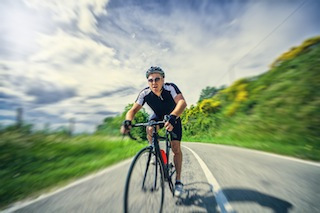 For today’s edition of Dear Mark, we’ve got four questions. First is a question from a reader who exemplifies the “between a rock and a hard place” situation inherent to chronic cardio. Second, I address a reader who worries that I’m not worried enough about exclusive muscle meat consumption. Third, I give my thoughts on whether starch persorption into the blood stream is a real problem for most people and a black mark against resistant starch. And finally, one of the lead authors of the fascinating Hadza gut biome study mentioned in a recent Weekend Link Love clarifies the precision of their sample preservation methods.
For today’s edition of Dear Mark, we’ve got four questions. First is a question from a reader who exemplifies the “between a rock and a hard place” situation inherent to chronic cardio. Second, I address a reader who worries that I’m not worried enough about exclusive muscle meat consumption. Third, I give my thoughts on whether starch persorption into the blood stream is a real problem for most people and a black mark against resistant starch. And finally, one of the lead authors of the fascinating Hadza gut biome study mentioned in a recent Weekend Link Love clarifies the precision of their sample preservation methods.
Let’s go:
Mark,
After years of aggressive road cycling, the lone aspect I am struggling with since starting the Primal Blueprint last year is leg fatigue. Granted I am 55, but a very healthy, lean and active 55. I find through repeatable experimentation that heading out on the bike on the normal daily Primal menu results in leg fatigue, but if I carb up the night before and again 2-3 hours before the event, I am just fine, back to my old self. This is how I did it before Primal. Am I missing something? By the way, though, when I do carb up, the muscle inflammation spikes up too, dang it!
Didn’t you mention that you were writing a book on Primal for endurance athletics?
Thanks,
David
You’ve just stumbled onto the big problem with chronic cardio. In order to stay competitive, maintain the training, and perform like usual during your rides, you need to carb up – usually with the junkiest stuff you can get your paws on. Short term, it feels good. You kill the ride, you improve your time, all is right in the world.
But if you carb up enough to support your massive training load, you may end up suffering from systemic inflammation from all the training and all the sugar. Long term, your body suffers and starts to fall apart at the seams. You’re noticing that yourself.
If you ask me, this is simply more evidence that “aggressive road cycling” isn’t something we should be doing on a regular basis; at least not if your goal is optimal health. To do so requires a suboptimal, inflammatory diet that’s almost as difficult to maintain as the training.
Also, when you go low-carb and start fat and keto-burning, you lose your top end for a while. There may be a lengthy adaptation that’s even lengthier if you’re not strict about it. Carbing up, particularly with non-Primal sources, may extend the adaptation period. If you’re not already, definitely start lifting heavy once a week in the gym, focusing primarily on the lower body. Squats, deadlifts, leg presses, lunges – that sort of thing. Doing heavy maximum output leg training in the gym once a week may help with adaptation and can actually increase the resistance of your muscles to fatigue during training.
There are ways to “carb” up the night before planned hard workouts (and you shouldn’t make every workout hard – maybe just twice a week) that minimize inflammation and maximize usable glycogen. Note the term “usable” that means that you might not need more than 150 grams total to top off muscle glycogen stores, especially since you’re only going to be drawing on (and depleting) leg glycogen on the bike. Fruits are a good way to do that, as are tubers.
Ideally, you just limit this kind of training. At any age but especially yours (and mine), that aggressive riding is hard to maintain and still thrive. Hard long rides for fun? Sure, I might even go for those once a year or so. If you insist (and I know you will because I know the feeling!), there is a better way to do this kind of training, which I’ll be exploring in my upcoming book, Primal Endurance. It’ll be right up your alley.
Dear Mark,
I know you’ve talked a great deal about what we lose out on when we shy away from the fattier cuts. However, I’ve never heard you say anything about the possible hazards of eating too much muscle meat. I think people read about how hunter-gatherers ate so much animal and think “Oh, well I can eat 2 pounds of steak every night” but hunter gatherers would never have eaten that much muscle meat at a time. Is it possible that a lot of the red flags about meat consumption are true and just misunderstood? Is it unhealthy to eat so much meat and so little of the fatty organs?
Dylan
I completely agree. The only point I contest: I have addressed this in previous posts.
I’ve come up with methods to trick oneself into eating organ meat because I recognize the nutritional importance of eating them.
I even took readers on a visual tour across the edible landscape of an entire animal carcass.
When I analyzed the latest “meat will kill you” study, I wondered if some of the (tenuous and often insubstantial when you correct for unhealthy lifestyles, cooking temperature/method, processed meat intake, etc.) connections between meat intake and early mortality can be explained by our widespread tendency to only consume muscle meat and eschew organs, bones, skin, and gelatinous cuts.
I don’t know that it’s “unhealthy,” but I do think that if you intend to base your diet around animal products, you can’t expect to get the best – or even good – results avoiding 75% of the animal. From Paleolithic hunter-gatherers eating the still pulsating colon packed with fermenting vegetation to grandmothers who’d visit their favorite butcher every Tuesday for bones, oxtails, liver, and shanks, our ancestors both distant and near ate everything. That’s been the normal way to “eat meat” up until a generation or two ago, and I suspect there’s something to it.
Hi Mark,
I’ve been following your posts about resistant starch and my husband and I have both started taking potato starch in the last couple of days.
Then I read this today from a podcast by Ray Peat:
‘Adding butter or cream slows the digestion so it isn’t such a powerful insulin stimulant, but it also reduces the chance of what’s called persorption of starch granules. [...] A potato starch granule happens to be very big. Other starches are more the size of a red blood cell, but a potato starch granule is several times fatter than that. But even these huge granules bigger than cells can get squeezed right through the wall of the intestine, enter the lymphatics and the blood system, so within 30 minutes after you eat starch without fat, you see the starch grains circulating through your blood, and if they’re big they’ll plug up your arterioles. Studies in mice showed that a high raw starch diet accelerated their aging. You can demonstrate areas of every organ that were being killed by plugging up the arteries.’
It freaked me out a bit and I’m wondering if this is true. I’ve always found your posts to be well researched and I trust your opinion. Is this something we should be concerned about?
Thanks,
Mel
I like reading Ray Peat’s stuff, you know, I really do, but I think he fixates on the minutiae way too much, often using obscure animal research and extreme conditions to support his positions.
Persorption of starch occurs, but it’s totally normal. It happens with any starch, not just raw starch, and humans clear any persorbed starch from the blood within a couple hours. In infants, it’s probably a feature rather than a flaw: human milk oligosaccharides, normally valued only for their prebiotic qualities, get into the bloodstream to mop up and clear pathogens while the immune system is still in its, ahem, infancy.
Persorption may be increased in cases of leaky gut, but what’s ironic (if you take the view that persorption is evil) is that the butyrate produced as a result of consuming resistant starch and other prebiotics lowers intestinal permeability. So if anything, eating more raw potato starch will reduce problematic amounts of persorption.
This is where taking a step back from the minutiae to look at the big, evolutionary picture can help. We can argue about how much starch humans have historically eaten, but everyone agrees that we have eaten starch for tens of thousands of years. Some cultures have eaten more than others. Many seemingly healthy cultures eat a fair amount of starch. There are problems with starch (over)consumption, especially in the modern sedentary inflamed population, but I don’t think persorption of starch granules into the bloodstream is one of the major ones.
In the end, you have to weigh your options. Do you continue taking potato starch for the direct, observed, experienced, empirical benefits to digestion, sleep, gut health, and metabolism? Or do you hang your hat on a theoretical problem, on the off-chance that persorption of starch into the bloodstream is slowly, inexorably, silently killing you? I know what I’d choose.
Dear Mark,
First, I’ve been a long time reader of your site, have met you in person, and greatly admire the effort you put in to educating the community about how to achieve personal health and wellness. In the last couple of years, I’ve only managed time to read the link love days, which are very useful for me to see what kind of news aggregates on your radar. This week I am honored that one of those news pieces you linked is to the study that I and my colleagues recently published on the Hadza gut microbiome. Thank you for promoting further interest in this field of research and in our work.
I wanted to say, though, that while I support healthy discourse in science and think it is fair to offer the conclusions with the criticisms, in our case I am concerned about the emphasis on the criticism by Rob Knight that our results may be not valid due to the ethanol/silica storage procedure, and that the soon to be media zeitgeist on our work may be ultimately dismissive of our contribution. And this because of a comment wrought out of conflicting interests (Rob Knight works with Jeff Leach on their own Hadza microbiome study). Instead, I would like to encourage anyone with criticisms to read our methods in which we of course took measures to ensure this protocol would not invalidate our results. We first validated the method by sequencing and amplifying test samples both frozen and dried (ethanol) and obtained comparable results.
So, I suppose what I am saying is that while criticisms are welcome and a natural process of science, it is not helpful and instead harmful to give platform to unfounded criticisms that have already been thoroughly addressed in our original methodology and reporting. The paper is completely open access and I welcome any and all people to read it for themselves!
Gut microbiome of the Hadza hunter-gatherers
All the best,
Stephanie
I appreciate the email. From what I can tell from reading your methods and your explanation of the issue, you took all necessary precautions to ensure the validity of your results was not compromised. It seems that the Hadza do indeed throw into disarray our previously conceived notions of what constitutes a universally healthy gut biome.
Great work, Stephanie, and thanks for bringing that to our attention. Please do it again whenever something seems amiss!
Thanks for reading, everyone. Be sure to keep the questions coming and I’ll do my best to answer them.
Not a Subscriber? You Are Missing Out. Subscribe for Free Today and Instantly Get 8 Primal eBooks and So Much More!




April 27, 2014
Announcement: The Primal Life Kit Is on Sale Now. Offer Ends Today!

If you’ve been hanging with me for a while, you’ve probably noticed I’m always encouraging my readers to explore new research, new recipes, and new regimens to lift their Primal journey past plateaus and to the next level. I’ve found a great resource for both the Primal newbie looking to activate his hunter-gatherer roots and the Primal connoisseur looking to expand her Primal knowledge. Put together by our friends at PaleoPlan.com, the Primal Life Kit is a compilation of all the ancestral tools you need to cook, eat, workout, and live Primally.
There’s a total of 49 products and 14 discounts in the Primal Life bundle. They’ve got 21 paleo cookbooks full of mouthwatering, gluten-free recipes, 2 meal plans, and even an online cooking club. Did I mention the 3 fitness programs…informational eBooks on topics like autoimmunity, inflammation, and going paleo on a budget…and 14 discounts on products like Primal Life organics and the best paleo-designed supplements?
Here’s a quick snapshot of the entire package:
21 Paleo and Primal Recipe & Meal Planning eBooks ($221 Value)
4 Autoimmune and Inflammation eBooks ($150 Value)
6 Informational/How-To eBooks ($75 Value)
3 research papers by Dr. Loren Cordain ($15 Value)
1 Online cooking club subscription ($39 Value)
2 Success Stories eBooks ($31 Value)
2 Kids and Paleo eBooks ($21 Value)
3 Fitness Programs ($67 Value)
2 Paleo Challenges ($44 Value)
2 Meal Plans ($69 Value)
2 Online Magazine Subscriptions ($36 Value)
1 Bonus Video about Eating on the Road
14 Discounts ($757+ Value)
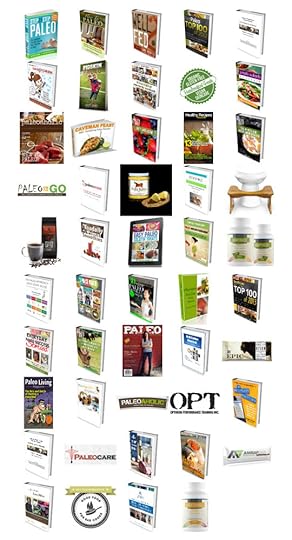
Perhaps what makes this bundle so unbelievable is the price. For this week ONLY, it’s going for $39–that’s with an original retail value of $1500. That’s over 97% off the retail value!
I can personally attest to the quality of products included. In fact, I’ve contributed a couple items myself. First there’s Primal Blueprint’s latest eBook Primal Blueprint Success Stories: Real Life Transformations. I put together this eBook to share uplifting stories of health transformation and personal triumph to inspire you whenever you hit a slump in your Primal endeavors. If you enjoy the success story blog posts published on Mark’s Daily Apple each Friday, you’ll love this eBook. And the only place to get this eBook is in the Primal Life Kit.
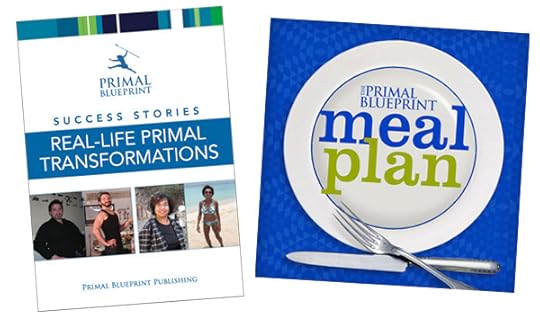
Inspiration is one part of the puzzle, implementation is another. Which is why I also contributed a coupon that will give you the first month of the Primal Blueprint Meal Plan (a monthly retail value of $9.99) for just 1 cent. That’s 1 cent for a new meal plan and shopping list delivered to your inbox every week. We’re talking all the grocery lists, meal plans, and recipes you need to start eating Primal today–and every day–for a month.
The Primal Life Kit links the best of our ancestral past with our modern world, providing all resources in digital (PDF) format so you can read on your computer or eReader. It’s a limited time offer, folks! Just this week from April 21-28th. Accelerate your Primal learning and living curve! Cheers to sharing and growing in the Primal community together!
Get Your Primal Life Kit Before the Offer Ends at Midnight on April 28th!




Weekend Link Love
 Tomorrow is the final day of the Primal Life Kit! Get 49 Primal/paleo products – including the latest Primal Blueprint eBook, Primal Blueprint Real-Life Transformations – valued at $1500, for just 39 bucks through tomorrow night.
Tomorrow is the final day of the Primal Life Kit! Get 49 Primal/paleo products – including the latest Primal Blueprint eBook, Primal Blueprint Real-Life Transformations – valued at $1500, for just 39 bucks through tomorrow night.
Episode #16 of The Primal Blueprint Podcast is now live. It’s another great reader question roundup.
Research of the Week
Hypoglycemic married couples get into more and worse fights than normoglycemic married couples.
Naps are linked to a higher risk of dying, but I doubt it’s causative. Far more likely is that people who get worse sleep at night and have worse health as a result require more naps.
Yes, endurance athletes. You still need to strength train.
Snacking increases liver and belly fat more than eating big meals, even when overall caloric intake is the same.
Interesting Blog Posts
The ergogenic effects of sitting in a dark, blistering-hot room with sweaty, naked old men and/or women.
Too busy to meditate? Try these helpful tips for integrating mindfulness into your everyday life.
Pollen may not be the actual cause of seasonal allergies.
Are you getting enough vitamin J?
Media, Schmedia
I wrote a piece for Bare Essentials Magazine about the many faces of Primal life. Check it out.
How being a doctor became the most miserable profession.
Or perhaps not.
Everything Else
The NY Times Learning Network put together a respectable prompt for teaching students how to study nutrition, disease, and clinical trials.
Is food so cheap that we can’t bring ourselves to respect it?
Want the perfect standing workstation tailored to your body? Enter your specs here and get the results.
Forget Code Blue. Do hospitals need a Code Death?
Recipe Corner
This is an odd – but excellent – one: deconstructed paleo bacon sushi.
What do you do when you want carnitas real bad but haven’t got any pork butt? If you view language as a fluid substance, you make beef carnitas.
Time Capsule
One year ago (Apr 27 – May 3)
Crawling, Balancing, Rolling: The Importance of Practicing Natural Movements – Have you crawled, rolled, balanced, or done a series of natural movements lately? Do it.
Do We Need Rites of Passage? – Part 2 – Are rites of passage a quaint, irrelevant holdover from times long past?
Comment of the Week
Once again it looks like all roads lead to the gut. It’s hard to stomach what conventional wisdom tries to stuff down our throats.
- Har, har.
Not a Subscriber? You Are Missing Out. Subscribe for Free Today and Instantly Get 8 Primal eBooks and So Much More!




April 26, 2014
The Best Kind of Jam Is Bacon Jam
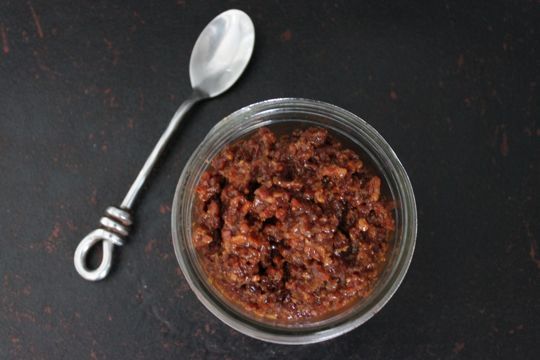 Be warned that bacon jam is a highly addictive substance. You’ll no sooner make one batch than you’ll want to start another, tweaking the recipe slightly to make it a little smokier, or sweeter or spicier. Just remember that bacon jam is a condiment, not a main course to be eaten with a spoon – at least not every day.
Be warned that bacon jam is a highly addictive substance. You’ll no sooner make one batch than you’ll want to start another, tweaking the recipe slightly to make it a little smokier, or sweeter or spicier. Just remember that bacon jam is a condiment, not a main course to be eaten with a spoon – at least not every day.
What does one spread their bacon jam on? Scrambled eggs, deviled eggs, omelets, spinach salad, steak, burgers, salmon, grilled vegetables…the smoky, spicy, sweet flavor can jazz up just about anything. It’s a secret weapon to keep in the refrigerator, transforming a meal from blah to “aha!”
There are countless versions of this Southern specialty. This particular recipe for bacon jam leans more towards savory and spicy than sweet. The addition of coffee gives it a little kick, although not as much as versions with bourbon do…
Servings: Approximately 1 1/2 cups
Time in the Kitchen: 20 minutes, plus 1 hour to simmer
Ingredients:
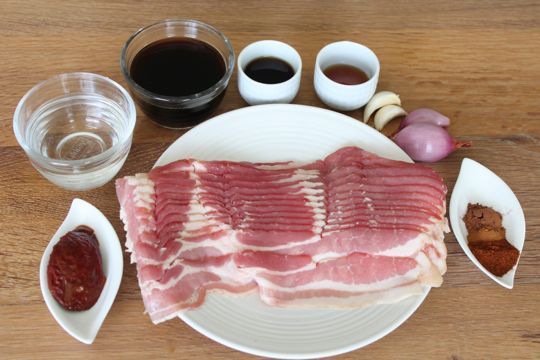
12 to 16 ounces of bacon (340 g to 450 g)
2 cloves garlic, finely chopped
2 shallots, finely chopped
1 teaspoon chili powder (5 ml)
1/4 teaspoon cinnamon (a pinch)
1/2 teaspoon unsweetened cocoa powder (2.5 ml)
1/2 of a chipotle pepper en adobo, chopped (or more, but these canned peppers add a lot of heat)
2 tablespoons sherry vinegar (30 ml)
1 tablespoon maple syrup (15 ml)
1/2 cup strongly brewed coffee (120 ml)
1/2 cup water (120 ml)
Instructions:
Cook the bacon, but not too crisp (save some of the fat for sautéing the garlic and shallot). Cut the bacon into one-inch pieces.
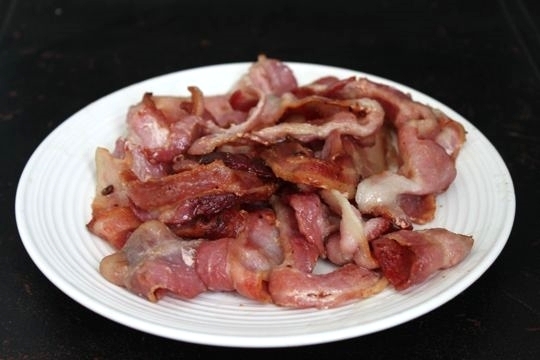
In a little of that reserved bacon fat, sauté the garlic and shallot for a few minutes to soften the garlic. Add the chili powder, cinnamon, cocoa powder, chipotle pepper in adobo, vinegar, maple syrup, coffee, water and the bacon. (As a substitution for coffee, simply use 1 cup/240 ml of water)
Simmer on low, uncovered, for about 1 hour. Stir occasionally and add a little water if the pot begins to get dry. The finished product should be thick and syrupy.
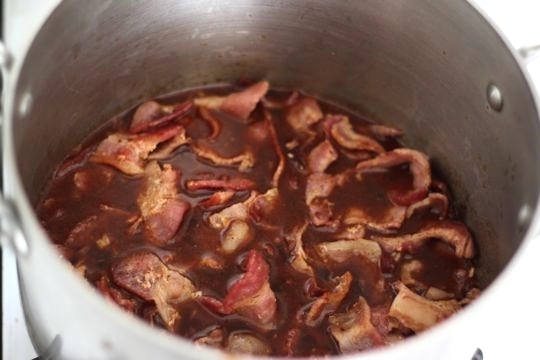
Put in a food processor and pulse a few times to blend just a little, leaving the texture somewhat chunky.
Refrigerate until completely chilled. Bacon jam will keep, refrigerated, for several weeks.
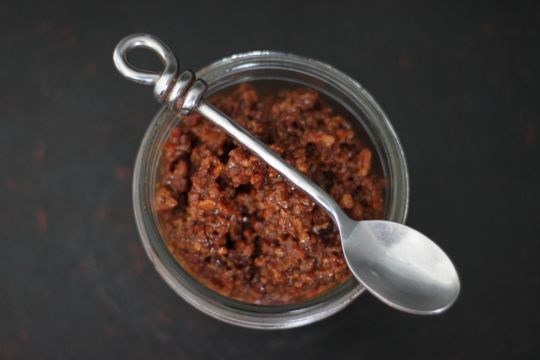
Not Sure What to Eat? Get the Primal Blueprint Meal Plan for Shopping Lists and Recipes Delivered Directly to Your Inbox Each Week




The Best Kind of Jam is Bacon Jam
 Be warned that bacon jam is a highly addictive substance. You’ll no sooner make one batch than you’ll want to start another, tweaking the recipe slightly to make it a little smokier, or sweeter or spicier. Just remember that bacon jam is a condiment, not a main course to be eaten with a spoon – at least not every day.
Be warned that bacon jam is a highly addictive substance. You’ll no sooner make one batch than you’ll want to start another, tweaking the recipe slightly to make it a little smokier, or sweeter or spicier. Just remember that bacon jam is a condiment, not a main course to be eaten with a spoon – at least not every day.
What does one spread their bacon jam on? Scrambled eggs, deviled eggs, omelets, spinach salad, steak, burgers, salmon, grilled vegetables…the smoky, spicy, sweet flavor can jazz up just about anything. It’s a secret weapon to keep in the refrigerator, transforming a meal from blah to “aha!”
There are countless versions of this Southern specialty. This particular recipe for bacon jam leans more towards savory and spicy than sweet. The addition of coffee gives it a little kick, although not as much as versions with bourbon do…
Servings: Approximately 1 1/2 cups
Time in the Kitchen: 20 minutes, plus 1 hour to simmer
Ingredients:

12 to 16 ounces of bacon (340 g to 450 g)
2 cloves garlic, finely chopped
2 shallots, finely chopped
1 teaspoon chili powder (5 ml)
1/4 teaspoon cinnamon (a pinch)
1/2 teaspoon unsweetened cocoa powder (2.5 ml)
1/2 of a chipotle pepper en adobo, chopped (or more, but these canned peppers add a lot of heat)
2 tablespoons sherry vinegar (30 ml)
1 tablespoon maple syrup (15 ml)
1/2 cup strongly brewed coffee (120 ml)
1/2 cup water (120 ml)
Instructions:
Cook the bacon, but not too crisp (save some of the fat for sautéing the garlic and shallot). Cut the bacon into one-inch pieces.

In a little of that reserved bacon fat, sauté the garlic and shallot for a few minutes to soften the garlic. Add the chili powder, cinnamon, cocoa powder, chipotle pepper in adobo, vinegar, maple syrup, coffee, water and the bacon. (As a substitution for coffee, simply use 1 cup/240 ml of water)
Simmer on low, uncovered, for about 1 hour. Stir occasionally and add a little water if the pot begins to get dry. The finished product should be thick and syrupy.

Put in a food processor and pulse a few times to blend just a little, leaving the texture somewhat chunky.
Refrigerate until completely chilled. Bacon jam will keep, refrigerated, for several weeks.

Not Sure What to Eat? Get the Primal Blueprint Meal Plan for Shopping Lists and Recipes Delivered Directly to Your Inbox Each Week




April 25, 2014
Announcement: The Primal Life Kit Is on Sale Now! Offer Ends Monday.

If you’ve been hanging with me for a while, you’ve probably noticed I’m always encouraging my readers to explore new research, new recipes, and new regimens to lift their Primal journey past plateaus and to the next level. I’ve found a great resource for both the Primal newbie looking to activate his hunter-gatherer roots and the Primal connoisseur looking to expand her Primal knowledge. Put together by our friends at PaleoPlan.com, the Primal Life Kit is a compilation of all the ancestral tools you need to cook, eat, workout, and live Primally.
There’s a total of 49 products and 14 discounts in the Primal Life bundle. They’ve got 21 paleo cookbooks full of mouthwatering, gluten-free recipes, 2 meal plans, and even an online cooking club. Did I mention the 3 fitness programs…informational eBooks on topics like autoimmunity, inflammation, and going paleo on a budget…and 14 discounts on products like Primal Life organics and the best paleo-designed supplements?
Here’s a quick snapshot of the entire package:
21 Paleo and Primal Recipe & Meal Planning eBooks ($221 Value)
4 Autoimmune and Inflammation eBooks ($150 Value)
6 Informational/How-To eBooks ($75 Value)
3 research papers by Dr. Loren Cordain ($15 Value)
1 Online cooking club subscription ($39 Value)
2 Success Stories eBooks ($31 Value)
2 Kids and Paleo eBooks ($21 Value)
3 Fitness Programs ($67 Value)
2 Paleo Challenges ($44 Value)
2 Meal Plans ($69 Value)
2 Online Magazine Subscriptions ($36 Value)
1 Bonus Video about Eating on the Road
14 Discounts ($757+ Value)

Perhaps what makes this bundle so unbelievable is the price. For this week ONLY, it’s going for $39–that’s with an original retail value of $1500. That’s over 97% off the retail value!
I can personally attest to the quality of products included. In fact, I’ve contributed a couple items myself. First there’s Primal Blueprint’s latest eBook Primal Blueprint Success Stories: Real Life Transformations. I put together this eBook to share uplifting stories of health transformation and personal triumph to inspire you whenever you hit a slump in your Primal endeavors. If you enjoy the success story blog posts published on Mark’s Daily Apple each Friday, you’ll love this eBook. And the only place to get this eBook is in the Primal Life Kit.

Inspiration is one part of the puzzle, implementation is another. Which is why I also contributed a coupon that will give you the first month of the Primal Blueprint Meal Plan (a monthly retail value of $9.99) for just 1 cent. That’s 1 cent for a new meal plan and shopping list delivered to your inbox every week. We’re talking all the grocery lists, meal plans, and recipes you need to start eating Primal today–and every day–for a month.
The Primal Life Kit links the best of our ancestral past with our modern world, providing all resources in digital (PDF) format so you can read on your computer or eReader. It’s a limited time offer, folks! Just this week from April 21-28th. Accelerate your Primal learning and living curve! Cheers to sharing and growing in the Primal community together!
Get Your Primal Life Kit Before the Offer Ends on April 28th!




Mark Sisson's Blog
- Mark Sisson's profile
- 199 followers



